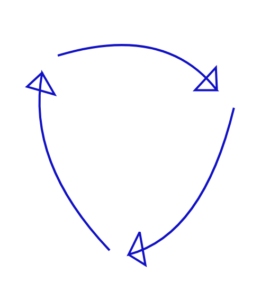 When I hear about the fundamentals of improvement, one of the most common pieces of advice that I have come across is practice. Everything from sports, to academics, to music has an essential component of practice that is a prerequisite for seeing marked increases in performance. For that matter, anything skills-based has repetitive efforts as a core feature. This is integral to progress.
When I hear about the fundamentals of improvement, one of the most common pieces of advice that I have come across is practice. Everything from sports, to academics, to music has an essential component of practice that is a prerequisite for seeing marked increases in performance. For that matter, anything skills-based has repetitive efforts as a core feature. This is integral to progress.
In my experience, practice puts the key in the car, but purposeful practice starts the ignition. The idea of “working smart” is of utmost interest here because it returns the most value on time spent. We have ingrained this philosophy in society by constantly developing technologies and tricks so that we can become smarter and faster. Shortcuts have been around for a long time. Instead of filing our own taxes, we use Turbotax. We try to learn to speed read. Rather than going out of our way to pick up food, we utilize Uber Eats and Postmates. Some of us are too damn busy to even eat that we guzzle down Soylent to supplant our meals. The point is, corporations have built their entire enterprises on the principle of working smart, to the extent that their profits are inevitable. But this is inherently problematic because such innovations facilitate laziness. Suddenly, working smart is conflated with taking it easy, and we lose sight of our own improvement.
To this end, I posit a different form of purposeful practice: working iteratively.
The idea of iterative design first grew out of engineering and development in the 1930s, when Walter Shewhart devised a product cycle plan as a quality control employee at Bell Labs. His idea for the cycle was abbreviated as PDSA, or “Plan–Do–Study–Act.” The steps are self-explanatory, but they speak volumes. Before starting a new endeavor at Bell, Shewhart suggested that the company plan for what they aimed to introduce. This meant asking the right questions, like “Is the product feasible to produce?”, “Will this interest the general population?”, and “Who are our competitors?”. The process of doing required enacting the plan and delivering high quality results. But even when planning was thorough and well advised, sometimes the outcomes were not desirable. This meant studying the flaws in the development process and noting the strengths of the cycle as well.
Studying, or reflecting, was the defining feature of PDSA because it preceded improvement. In theory, the reflection guaranteed at least some form of progress because it would eliminate mistakes made in the previous “Plan” or “Do” phase. Upon compiling a list of learning lessons, Bell could then move forward with the next cycle in the “Act” phase, delivering a prototype or product that was of higher quality than the one prior. The exciting aspect of the PDSA approach was that it was not finite, and when the time came, you could truly see that the end result was far better than square 1. As such the concept of incremental improvement was conceived, and Shewhart’s ideas became encapsulated in the field of Iterative and Incremental Development, or IID.
Today, the philosophy of iterative design is a cornerstone of many software companies. It is now known as the Agile method, and each product cycle is known as a Sprint, a 2- week period in which something like a PDSA is carried out. The beauty of Shewhart’s ideas is that they need not be confined to a group working on a project. An individual can utilize such principles on perhaps their most important project in life: themselves.
The iterative design approach, when applied to everyday life, can help us become better people. Planning before doing, and studying before acting again can do wonders for our skills, personality, and wellbeing. Not making the same mistake twice is easier said than done, but with a PDSA-like mindset, it can be a point of focus. The applications are limitless. Want to be a better violin player? Use PDSA to understand the gaps in your performance. Need to improve your public speaking skills? Try PDSA, and analyze what is holding you back. Want to be more empathetic and kind? Employ PDSA in the conversations you have with others. Iterative design is one of the most simple, powerful tools that can boost your performance in all walks of life.
Matthew Syed, author of Bounce: The Myth of Talent and the Power of Practice, highlights the importance of reflection when he says, “Feedback is the rocket fuel that propels the acquisition of knowledge, and without it no amount of practice is going to get you there.” The popularized 10,000-hour rule means nothing without quality, timely feedback. He maintains this philosophy throughout his book, citing his own experience in training as an Olympic table tennis player as evidence for the importance of reflection. To me this is a direct correlation to studying mistakes and successes, and capitalizing on both in their respective manners.
The notion of working smart is rooted in good intention, but it does not deliver a complete algorithm for improvement. In order to truly experience “gains” in life, employing iterative design is the way to go. If at first you don’t succeed –reflect, then try again.

